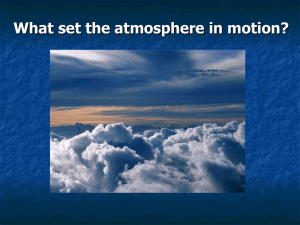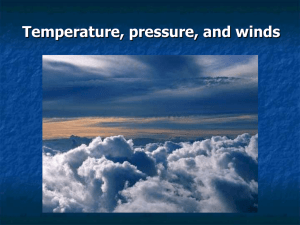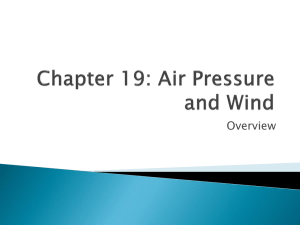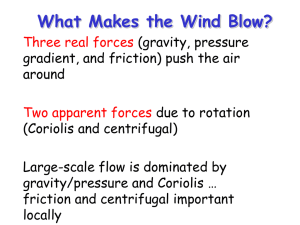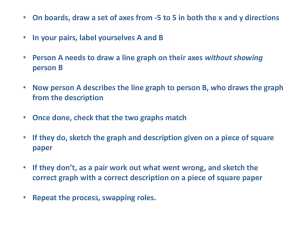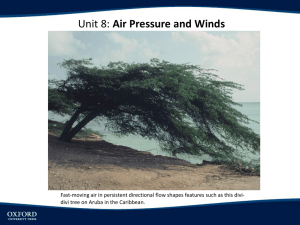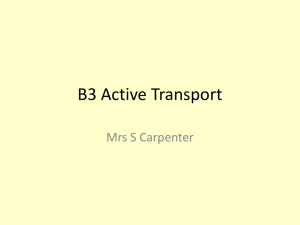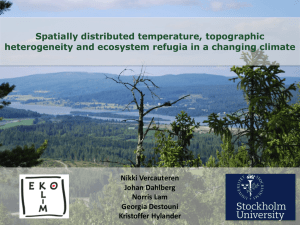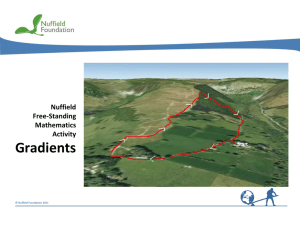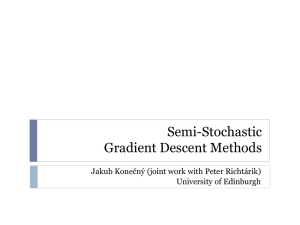5.07 Wind - 94aircadets.ca
advertisement
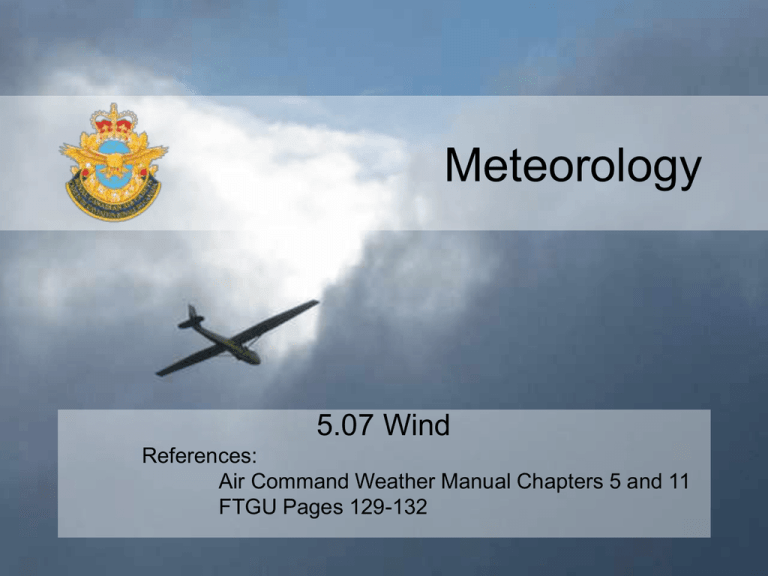
Meteorology 5.07 Wind References: Air Command Weather Manual Chapters 5 and 11 FTGU Pages 129-132 5.07 Wind • MTPs: – Pressure Gradient – Veering and Backing – Coriolis Force – Surface Friction – Gusts and Squalls – Diurnal Effects Pressure Gradient • Wind – the horizontal movement of air – caused by pressure differences in the horizontal Pressure Gradient • Pressure Gradient – the rate of change of pressure over a given distance – measured at right angles to the isobars • close together = steeper gradient and stronger winds • further apart = shallower gradient and weaker winds Pressure Gradient Veering and Backing Veering – Wind changes direction clockwise – Wind veers and increases during the day – Wind veers and increases with increase in altitude Backing •Wind changes direction counter-clockwise •Wind backs and decreases at night •Wind backs and decreases with decrease in altitude Veering and Backing N Example: Winds start the day at 300o and by 1400 the winds are 340o and by night they are 310o 320° c VEERING 270° b a 3 240° 1 180° 120° 2 140° BACKING 22 Coriolis Force • Coriolis Force: – Earth turns below atmosphere • In N Hemisphere deflected to the right • To left in S Hemisphere • http://www.youtube.com/watch?v=_36MiCUS1ro Confirmation • Wind is: • Pressure Gradient is: • Backing is: • Describe Coriolis Force. Surface Friction • Surface friction – Friction between surface and atmosphere slows movement of air, this in turn slows Coriolis force – Only up to a few thousand feet (except in mountainous regions) Gusts and Squalls • Gusts – a brief rapid increase of wind speed. – may be associated with a rapid change in wind direction – Causes may be related to mechanical turbulence and unequal heating Mechanical Turbulence Unequal Heating 14 Gusts and Squalls • Squalls –A sudden increase in wind strength –Longer than a gust –May be caused by a fast moving cold front or thunderstorm –May be accompanied by a rapid change in direction Confirmation • What is surface friction and what are its effects? • Gusty conditions may be caused by Diurnal Effects • If isobaric pattern and pressure gradient are identical – During day… – At night… Diurnal Effects Land and Sea Breezes Diurnal Effects Land Breeze This condition is very local and affects only a narrow area along the coast: Occurs at night; and Wind blows from the land (high pressure) towards the warm water (low pressure area) L Warm Air H Cold Air 15 11 Diurnal Effects Sea Breeze Occur during the day L Warm Air Wind blows from the sea H Cold Air 16 12 Diurnal Effects Memory Tool Ana goes up and throws the Kat down. The Kat comes down at night Diurnal Effects Katabatic Wind At night, the slopes of hills cool. The air contact with them becomes cooler and therefore denser and it blows down the slope. Also known as a Mountain Breeze. Denser Air Less Dense Air 18 Diurnal Effects Anabatic Wind Slopes of hills not covered by snow will be warmed during the day. The air in contact with them becomes warmer and less dense and therefore flows up the slope. Also known as a Valley Breeze. Less Dense Air Denser Air 17 Confirmation • When do sea breezes occur? • What causes a Katabatic wind? • What is it called when vapour changes to liquid? The Effects of a Hurricane
